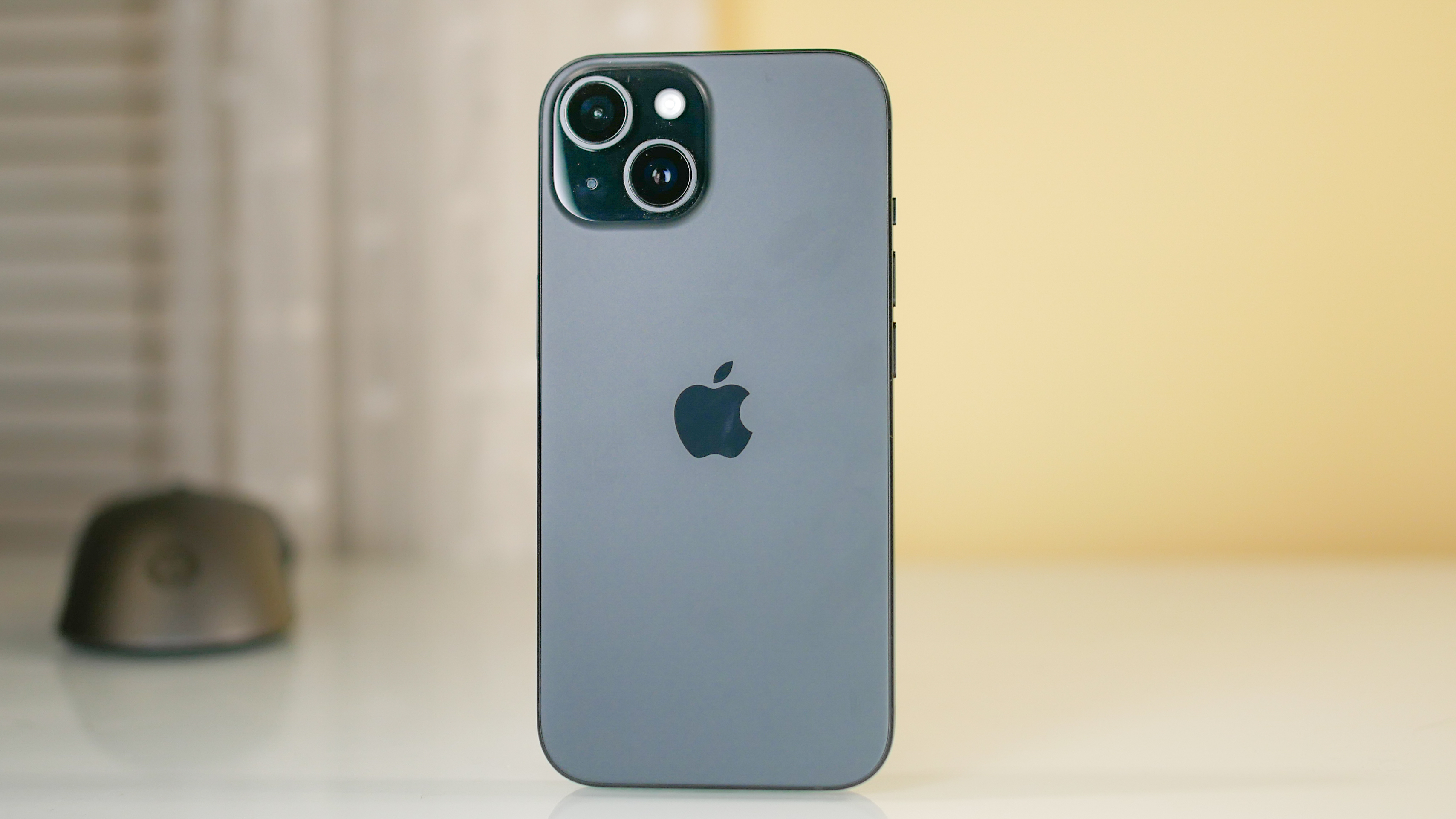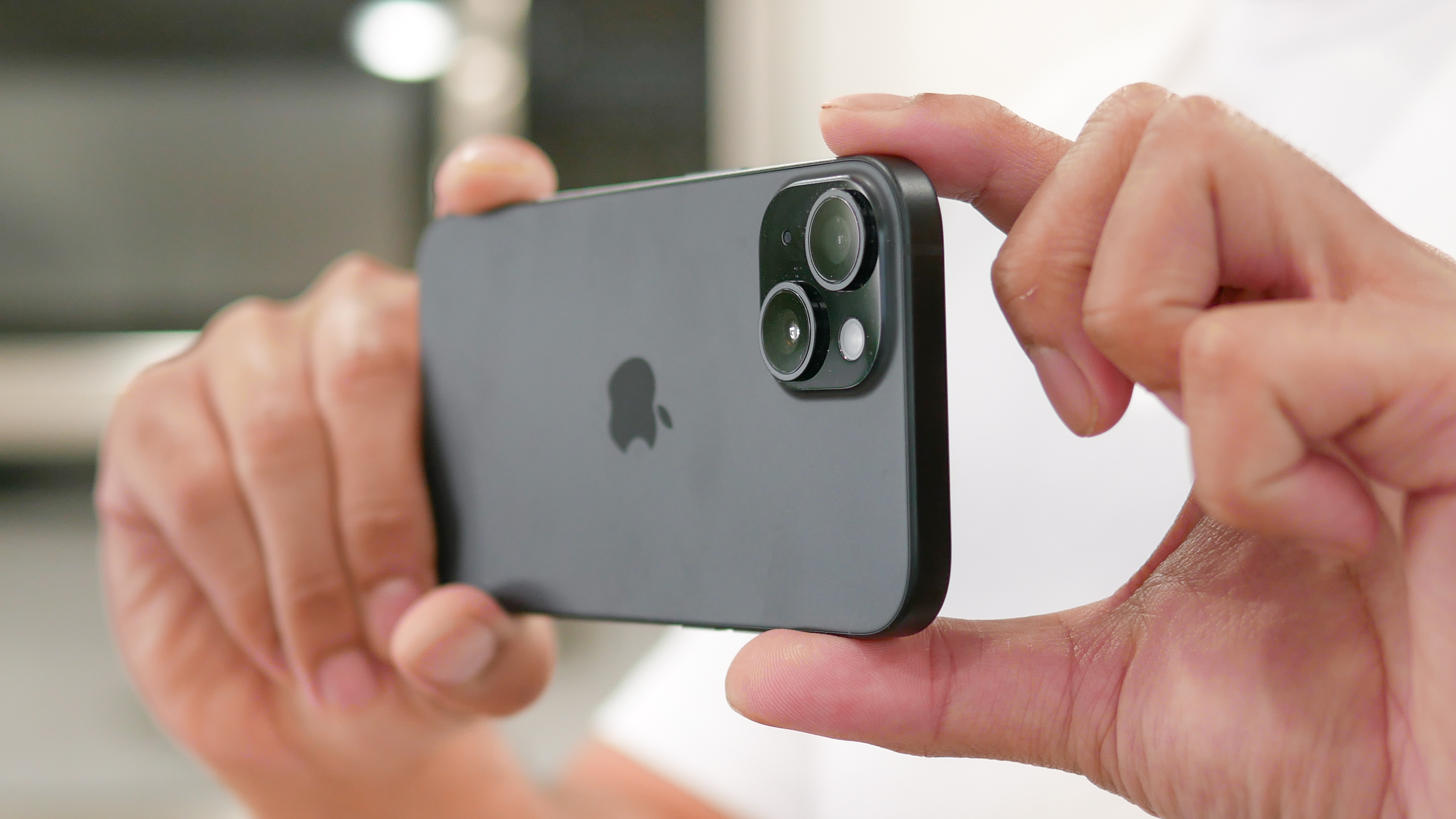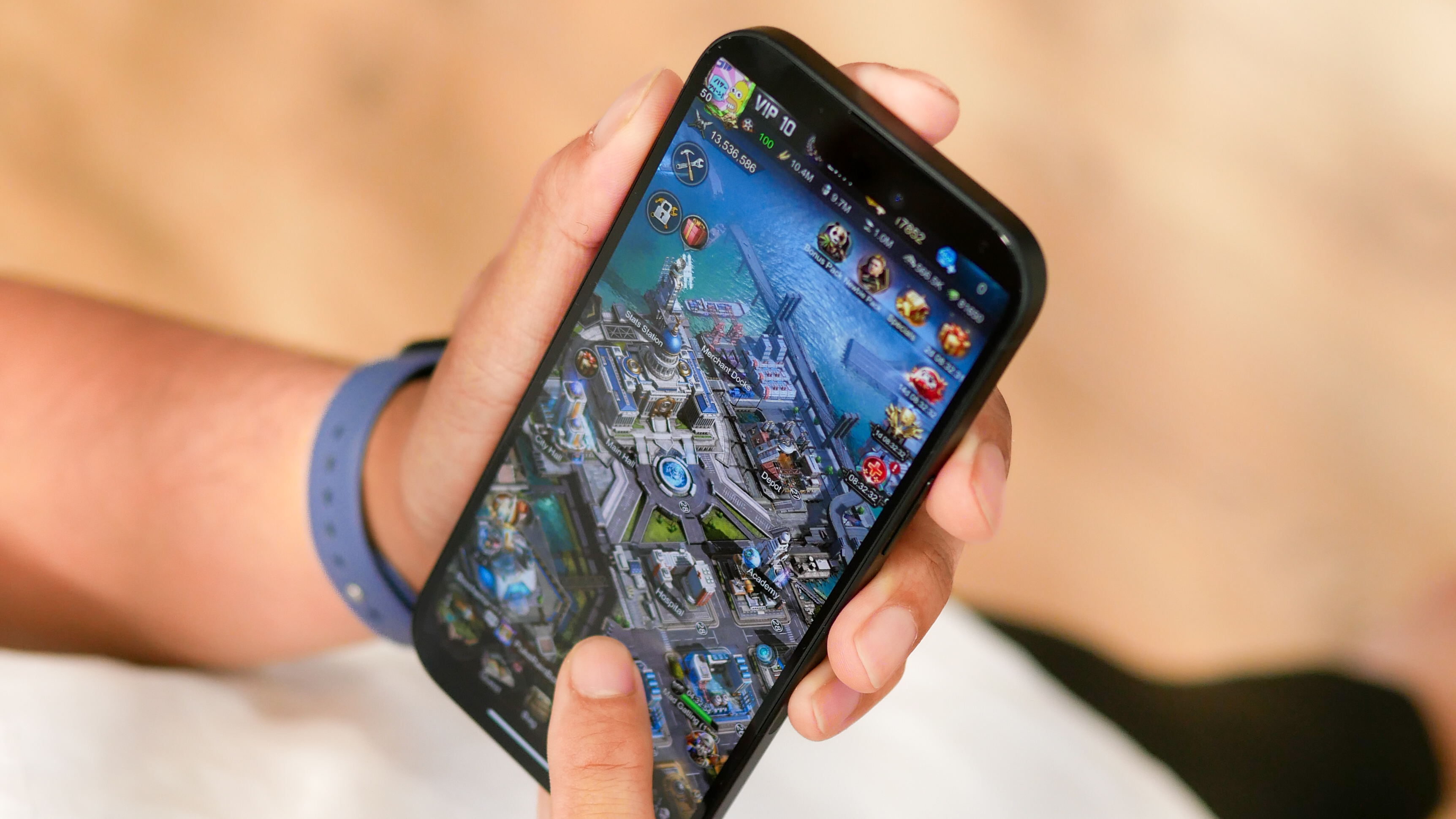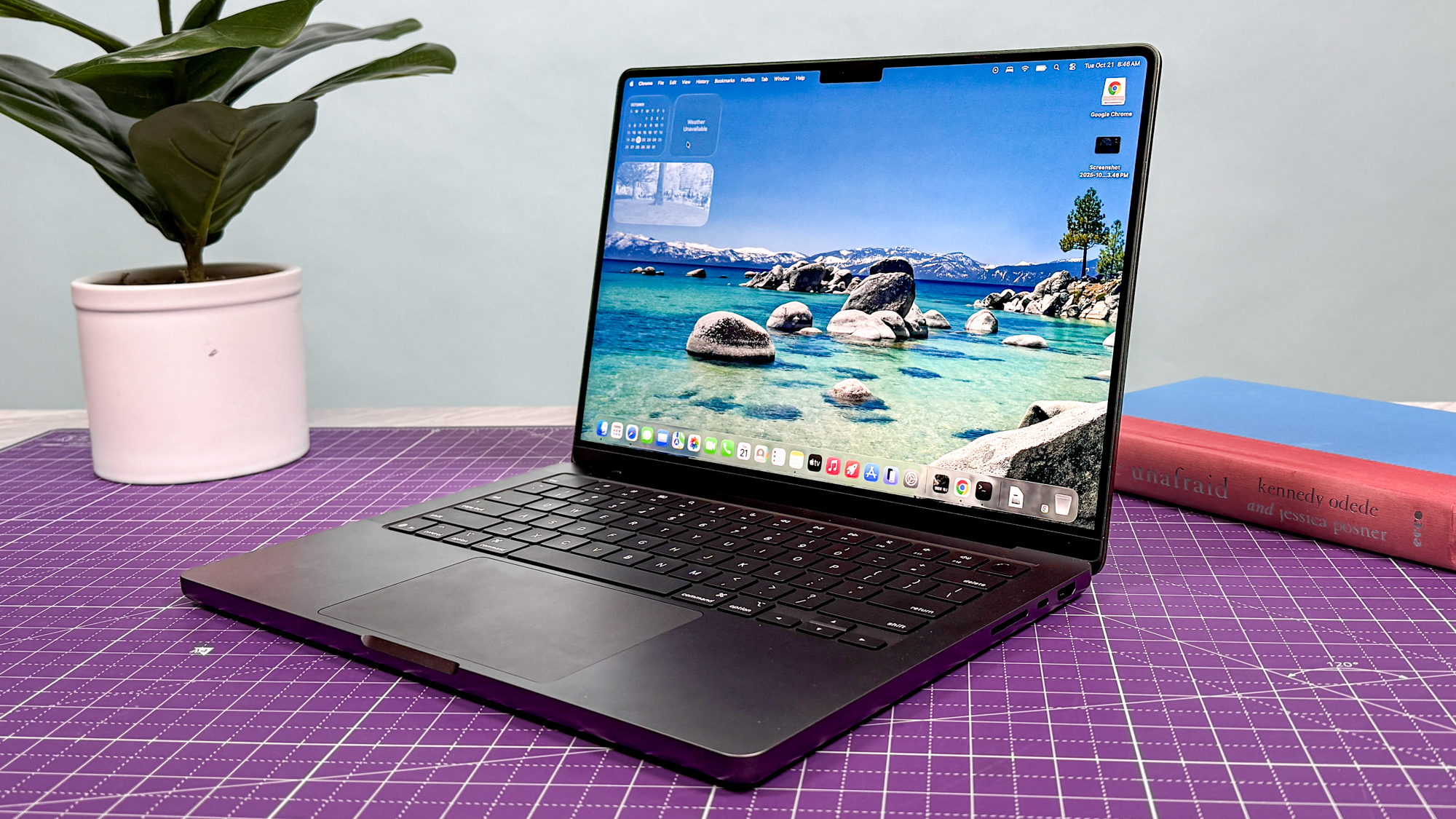Tom's Guide Verdict
The iPhone 15 is a great flagship value with its new 48MP camera with 2x zoom, refined contoured design and brighter display. The A16 Bionic chip is a year old but still quite fast, and you get strong battery life. It’s also nice to see a USB-C port, though there’s no change to charging speed. The only real strike against the iPhone 15 is its 60Hz refresh rate.
Pros
- +
Outstanding battery life for its size
- +
Excellent main camera performance
- +
Powerful A16 Bionic chip
- +
Charming design and color options
- +
Brighter Super Retina XDR display
Cons
- -
No change to its battery recharge speed
- -
60Hz refresh rate
Why you can trust Tom's Guide
After a year of using the $1,099 iPhone 14 Pro Max, I'm pleasantly surprised that the new $799 iPhone 15 delivers Pro-level camera quality and performance for hundreds less. I didn’t think the gap between the two phones would be this narrow, but you’ll see in my iPhone 15 review how Apple's entry-level flagship is packed densely with new features that make it a bigger leap over its predecessor.
Launched alongside its larger-sized sibling, the iPhone 15 Plus, the iPhone 15 may be the smallest model in Apple's current lineup, but I really enjoy how Apple took the best parts of the iPhone 14 Pro series and fit them into the new phone. Those improvements include the A16 Bionic chip, upgraded 48-megapixel main camera, and Dynamic Island. I was expecting a more stripped-down version of the iPhone 15 to define the “pro” models from the standard ones. That’s not the case.
In my iPhone 15 review, you’ll see how this model stacks up against last year’s flagship and how good it is against other similarly priced phones — like the Google Pixel 7 or more recent releases like the Galaxy S24 and Pixel 8. I don’t want to drop spoilers this early on, but the iPhone 15 makes a strong case as one of the best phones available right now, even with more powerful options in Apple's lineup.
iPhone 15 review: Price and release date

I’ve complained so much about how smartphones have gotten expensive. Since its starting cost remains at $799, I find the iPhone 15 attractive over premium smartphones that start at $999.
You have three storage options to choose from: 128GB, 256GB, and 512GB. While the 128GB and 256GB options are priced at $799 and $899 respectively, I find it somewhat shocking to know that it costs a whopping $1,099 for the 512GB model.
The iPhone 15 went on sale last September, and by now, there are plenty of iPhone 15 deals to help lower the cost of your handset purchase.
iPhone 15 review: Specifications
| Row 0 - Cell 0 | iPhone 15 | iPhone 15 Plus |
Price | $799 | $899 |
Display size | 6.1 inches | 6.7 inches |
Refresh rate | 60Hz | 60Hz |
CPU | A16 Bionic | A16 Bionic |
Storage | 128GB, 256GB, 512GB | 128GB, 256GB, 512GB |
Rear cameras | 48MP main, 12MP ultrawide | 48MP main, 12MP ultrawide |
Front camera | 12MP | 12MP |
Charging port | USB-C | USB-C |
Size | 5.81 x 2.82 x 0.31 inches | 6.33 x 3.06 x 0.31 inches |
Weight | 6 ounces | 7.1 ounces |
Colors | Pink, yellow, blue, black, green | Pink, yellow, blue, black, green |
iPhone 15 review: Design

Apple’s meticulous attention to detail is once again showcased in the iPhone 15’s design. I find it a lot more comfortable in my hand — versus the sharper hard lined edges of my iPhone 14 Pro Max. That’s because it’s sporting a new aerospace-grade aluminum enclosure that contours around the edge that I found delightful to hold.
Get instant access to breaking news, the hottest reviews, great deals and helpful tips.
Even though the black version of my iPhone 15 review unit is subdued, I really like how Apple differentiates the iPhone 15’s design by infusing color with the back glass. It’s a bit more noticeable with the blue, green, and pink versions of the iPhone 15 — which gracefully glistens in the light. It’s available in a total of five charming pastel-like colors that I absolutely adore. They are fun, expressive and have a lot more character than the neutral color options of the iPhone 15 Pro series.

One new change that some consider controversial is Apple’s decision to drop the tried and true Lightning port, and replace it with a USB-C port. If you’ve bought Lightning accessories for your iPhone over the years, they won't work unless you get an adapter. On the flip side, I do appreciate how I only need to bring along one cable for my gadgets. However, it should be noted that this USB-C port supports USB 2 — so its peak transfer speed tops out at 480 Mbps.
If you’re transferring huge files, you might find it slow. That’s especially true knowing that the iPhone 15 Pro series supports USB 3 speeds (10 Gbps) with their USB-C ports. As a videographer that used to transfer huge 4K video files from my iPhone to my laptop, I’m a little annoyed that it’s not faster.
Despite this, the iPhone 15 is still able to rock a design that’s unbelievably thin and light, offers an IP68 rating, available in a handful of charming colors and easy to manipulate with one hand.
iPhone 15 review: Display

The 6.1-inch Super Retina XDR display of the iPhone 15 may not be the most stunning display I’ve feasted my eyes on, but it doesn’t disappoint either. It has all the hallmark qualities I look for in an OLED screen: strong brightness level for outdoor use, punchy colors and plenty of detail.
What I miss though after using my iPhone 14 Pro Max is an always-on display and 120Hz refresh rate — which you won’t find in the iPhone 15. Instead, its Super Retina XDR display has a slower 60Hz display refresh rate. Having been used to the buttery scrolling of 120Hz displays, I notice how it’s not as fluid on the iPhone 15. I won’t say it’s a deal breaker for the average person, but it can absolutely be one for hardcore gamers that depend on high display refresh rates.
Apple claims that the iPhone 15’s screen can achieve a peak brightness level of 2,000 nits. In our lab tests indoors, the screen reached a maximum level of 1,401 nits with HDR turned on. That’s double the brightness of what we tested with last year’s iPhone 14.
| Row 0 - Cell 0 | iPhone 15 | Samsung Galaxy S24 | Pixel 7 |
Display size | 6.1-inch OLED | 6.2-inch AMOLED | 6.3-inch OLED |
sRGB (%) | 114.4% | 137.5% (Vivid), 120.8% (Natural) | 109.3% |
DCI-P3 (%) | 81.1% | 97.4% (Vivid), 85.5% (Natural) | 79.4% |
Delta-E | 0.18 | 0.22 (Vivid), 0.24 (Natural) | 0.28 |
Peak brightness | 1,401 nits | 1,416 nits | 926 nits |
I can’t overlook the fact that 1,401 nits is extremely bright when you consider how older phones like the Samsung Galaxy S23 and Google Pixel 7 are under 1,200 nits. You'd have to hunt down a newer model like the Galaxy S24 and its 1,416-nit brightness to find something on the iPhone 15's level. I find Apple's Super Retina XDR display visible outdoors on sunny days — while its rich color tones kept their potency at all viewing angles.
New to this year’s iPhone 15 is the adoption of the Dynamic Island, which was first introduced with the iPhone 14 Pro series last year. This premium feature adds more utility to the display by offering quick glances to live activities and updates, so you don’t have to jump between apps as often. You can easily switch music tracks in Spotify, check your Uber status in real-time and more.
There’s no denying that Apple improves the iPhone 15’s display over its predecessor. Its stronger brightness output and addition of the Dynamic Island are all welcomed in my opinion, but I really wish Apple gave it a 90Hz refresh rate at the very least to match up against its main rivals.
iPhone 15 review: Cameras

Out of all the iPhone 15 features, nothing stands out more than its upgraded 48MP main camera. While it closely resembles the main camera in the iPhone 14 Pro series, it’s technically using a different sensor — making it a different camera altogether. Nevertheless, it’s in the running for one of the best camera phones around.
Accompanying the main camera is a 12-megapixel ultrawide lens, perfect for capturing more of the scene. Even though it’s clearly a dual-camera system on the back of the iPhone 15, Apple effectively gives you a 2x telephoto camera by using a combination of hardware and software to achieve this ‘third’ camera option.
This sounds more like a glorified digital zoom when you think about how the iPhone 15 produces 24-megapixel files, which then become 12-megapixel snapshots when the zoom is applied. Overall, I have very little to complain about the iPhone 15’s camera performance — which works well no matter the lighting conditions.

Starting off with its main camera, you can see from the sample images below how it delivers excellent details, true-to-life colors and accurate color temperature that really does capture what I’m seeing with my own eyes. These are across the gamut: from perfect sunny day to night time situations.





One of the biggest questions I had was Apple’s claim of having a third camera option, the 2x telephoto. As you can see below, there’s no difference in terms of image performance between the two images of the wooden sign up close — nor is there one with the closeup of the clock. Using the main camera to produce a 24-megapixel photo, then capturing a 12-megapixel snapshot with the 2x telephoto, you can see how the two sets of photos have similar results.




Apple doesn’t call it an optical zoom for good reason, but I can see how people could be led to believe it is one. Essentially, it’s like you’re getting a cropped image of the 1x photo by using the 2x telephoto. That’s exactly the definition of a digital zoom. Don’t get me wrong, the 2x telephoto looks fantastic, but it doesn’t add any more detail than capturing a 1x photo with the main camera.
Compared to the Google Pixel 7, it’s really interesting to see how they capture the same scenes. I often find the Pixel 7 boosting its dynamic range to brighten the shadows, but it looks artificial in comparison to the iPhone 15’s photo. Additionally, the iPhone 15 tends to lean towards a warmer color temperature, which can be good or bad depending on your taste.






The iPhone 15 handles portrait shots nicely too, without overpowering the shot with blown out backgrounds. In fact, I like how details around my face in the image below are preserved, while edge detection seems to be spot-on. It looks a little more realistic than the Pixel 7’s portrait mode, which I think is too aggressive with the bokeh (on the default settings).

Interestingly, Apple throws in a neat new feature where it can convert a standard photo into a portrait one — just as long it recognizes a face in the photo. This comes in handy because it gives me the option to shoot photos without worry because I can go into the Photo app later on to select a face and apply the proper portrait effect to it.
Capturing selfies with the 12-megapixel TrueDepth camera of the iPhone 15 is a treat, especially when I compare the same shot against the Pixel 7. Most notably, it’s a smidge shaper with the iPhone 15.


Under low light situations, I really enjoy how the upgraded 48-megapixel camera delivers outstanding results. In high contrast scenes, it’s accompanied by rich details, which you can see in the fine details of the bricked sidewalk and tree in the far background. It’s also bright and offers excellent dynamic range performance.



However, I was most convinced by the results of its extreme low light shot — where there’s virtually very little ambient lightning around. I took the snapshot below of my backyard, which in reality looks pitch black with my eyes. Yet, the iPhone 15’s main camera is able to draw in a lot of light and uncover the details and color that I couldn’t see.



I’ll be frank about the iPhone 15 camera’s performance and say that it’s wonderful. However, I would suggest capturing 48-megapixel snapshots (despite the larger file sizes) — instead of the default 24-megapixel ones. That’s because you’ll have more flexibility later on to apply a crop or zoom without detail loss.
iPhone 15 review: Video

Video recording tops out at 4K 60fps, which is the industry standard amongst flagship phones. I find the performance on par to what I’ve captured with my iPhone 14 Pro Max, producing sharp looking footage paired with accurate colors. The stabilization also kicked in very well while I recorded video on a bump trolley ride, resulting in a steady shot as I held my hand still throughout the shoot.
For content creators such as myself, I really enjoy that Cinematic video is available on the iPhone 15 — where it keeps a sharp focus on a subject, while applying the cinematic look of making the background out of focus. I’m also thrilled that I can choose from three frame rate captures with video: 24, 30, and 60 fps. While Apple continues to omit true manual controls, the addition of Cinematic video along with these frame rate options do help out in making it a more versatile video camera.
iPhone 15 review: Performance

Impressively, the A16 Bionic chip powering the iPhone 15 actually delivers better performance than last year’s iPhone 14 Pro. Running GeekBench, it outclasses last year’s flagship model in every way with single and multicore scores of 2,518 and 6,179 respectively — whereas the iPhone 14 Pro Max delivered scores of 1,891 and 5,469.
Phone | CPU | Geekbench single-core | Geekbench multicore |
iPhone 15 | A16 Bionic | 2,518 | 6,179 |
Samsung Galaxy S23 | Snapdragon 8 Gen 2 for Galaxy | 1,582 | 4,876 |
Samsung Galaxy S24 | Snapdragon 8 Gen 3 | 2,235 | 6,922 |
iPhone 14 | A15 Bionic | 1,727 | 4,553 |
iPhone 14 Pro | A16 Bionic | 1,891 | 5,469 |
Google Pixel 7 | Tensor G2 | 1,054 | 3,021 |
The problem for the iPhone 15 is when you start looking at phones that came out a few months after its release. The Galaxy S24 features the Snapdragon 8 Gen 3 (at least for models released in North America), and the Qualcomm silicon in that phone posts a demonstrably better mutlicore result. That figures to be amplified as more Android phones powered by the Snapdragon 8 Gen 3 arrive throughout 2024.
Over on the graphics processing side, the A16 Bionic makes considerable gains over its predecessor. It achieved a score of 12,030 with 3DMark Wild Life Original Unlimited benchmark test, easily beating the iPhone 14’s score of 11,531. It’s very close to the iPhone 14 Pro’s 12,413 score, proving to me that it’s just as powerful. Once again, though, the Snapdragon 8 Gen 3-powered Galaxy s24 is the big winner here, with 120.4 frames per second to the iPhone 15's 72.1 fps result
Phone | CPU | Wild Life Original Unlimited (FPS) | Wild Life Original Unlimited (score) |
iPhone 15 | A16 Bionic | 72.07 | 12,030 |
Samsung Galaxy S23 | Snapdragon 8 Gen 2 for Galaxy | 87.3 | 14,588 |
Samsung Galaxy S24 | Snapdragon 8 Gen 3 | 120.4 | 20,113 |
iPhone 14 | A15 Bionic | 69.1 | 11,531 |
iPhone 14 Pro | A16 Bionic | 74 | 12,413 |
Google Pixel 7 | Tensor G2 | 40.3 | 6,727 |
So far in my testing, I haven’t come across an instance when the iPhone 15 stutters with its performance. Simple tasks such as launching apps, surfing the web and watching the occasional YouTube video are handled easily — but the iPhone 15’s gaming performance was equally enjoyable. The sprawling world map in Age of Origins rendered quickly scrolling through the landscape, but I also enjoy the fluid action sequences in first person shooters like Modern Combat 5.
Sure, it’s not my first choice as a gaming phone given it’s missing a smoother 90Hz or 120Hz display refresh rate, but the iPhone is more than capable of running all of today’s intensive action titles. I also like how quickly it renders 4K video using Cyberlink’s PowerDirector app.
iPhone 15 review: iOS 17
You shouldn’t overlook what iOS 17 brings to the table because it adds a lot of useful features to the iPhone 15’s experience. I enjoy the intuitiveness of using NameDrop to quickly send my contact details to another iPhone user by simply placing the top of my iPhone next to theirs. Additionally, I like how the iPhone 15 can turn any photo I’ve captured with the iPhone 15 and convert it into a Live Sticker I can send to people in messages and emails.
While many of the iPhone 15’s core experiences are made more intuitive, such as being able to select multiple photos and videos to send via AirDrop, one of iOS 17’s best features is the addition of StandyBy Mode — which effectively transforms it into a reliable alarm clock. Other iOS17 experiences I’ve enjoyed using include the new hand gestures with FaceTime, offline maps with Apple Maps, Live Voicemail, and Interactive Widgets.
I didn’t think that the software would have much of an impact on the entire experience, but it does.
iPhone 15 review: Battery life

Thanks to the combination of its power efficient A16 Bionic chip and 60Hz display refresh rate, the iPhone 15 offers outstanding battery life that easily surpasses the results of the iPhone 14 and 14 Pro before it. Not only did I get all-day battery life from a full charge, which often left me at around the 25% capacity mark right before bedtime, but running Tom’s Guide’s battery benchmark test reveals it’s one of the phone’s biggest improvements.
The iPhone 15 lasted an impressive 11 hours and 5 minutes on Tom’s Guide’s test, which blows the 9 hours and 46 minutes time of the iPhone 14 out of the water. Moreover, it’s nearly an hour longer than the iPhone 14 Pro’s time of 10 hours and 41 minutes. Really, I didn’t think a phone of this size would last longer than 10 hours, so it’s one of those special treats I wasn’t expecting.
| Row 0 - Cell 0 | iPhone 15 | Samsung Galaxy S24 | Pixel 7 | iPhone 14 |
Battery size | N/A | 4,000 mAh | 4,355 mAh | 3,279 mAh |
Battery life (Hrs:Mins) | 11:05 | 13:28 (adaptive) | 7:17 (adaptive) | 9:28 |
Wired Charging | 20W | 25W | 23W | 20W |
Recharge percentage (15 mins) | 26% | 28% | 20% | 27% |
Recharge percentage (30 mins) | 53% | 54% | 41% | 54% |
Unfortunately, the switch to USB-C doesn’t add any meaningful gains with the iPhone 15’s recharge time. Apple claims you can get to 50% battery within 30 minutes of charging using a 20W adapter and we got a slightly better 53% in our testing. But other Android phones offer even faster charging.

The iPhone 15 is also stuck at 15W charging with MagSafe and 7.5W with Qi wireless charging. However, Apple confirms that it will support the new Qi2 standard down the road that will boost Qi wireless charging to 15W.
iPhone 15 review: Verdict

Don’t let its compact design fool you because the iPhone 15 is densely packed with features that make it a potential flagship killer. Its $799 pricing is a lot easier to swallow than the $999 or higher cost of most of today’s best phones, but the combination of its charming design, excellent main camera performance and long lasting battery life make the iPhone 15 formidable phone worthy of your attention.
Compared to its predecessor, the iPhone 15 has been given hearty upgrades that make it vastly superior in every way. I’m astounded by the performance of its new 48-megapixel main camera and while the 2x telephoto is nothing more than a glorified digital zoom, the results look very good. The iPhone 15’s cameras nearly match pixel-to-pixel the quality I get from my iPhone 14 Pro Max.
That’s a compelling argument to make because now I have a camera phone with flagship quality at a much lower cost. In the greater scheme of things, I think it shows how you don’t need to shell out a fortune for a premium phone.
Our Apple coupon codes can help you save on their devices and accessories, allowing you to enjoy cutting-edge technology without breaking the bank.
More from Tom's Guide
- How to set up StandBy Mode in iOS 17
- Apple September event: All the latest iPhone 15 and Apple Watch 9 news
- The iPhone 15 is my favorite new iPhone — but it's missing two big things

John’s a senior editor covering phones for Tom’s Guide. He’s no stranger in this area having covered mobile phones and gadgets since 2008 when he started his career. On top of his editor duties, he’s a seasoned videographer being in front and behind the camera producing YouTube videos. Previously, he held editor roles with PhoneArena, Android Authority, Digital Trends, and SPY. Outside of tech, he enjoys producing mini documentaries and fun social clips for small businesses, enjoying the beach life at the Jersey Shore, and recently becoming a first time homeowner.





